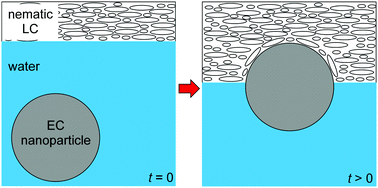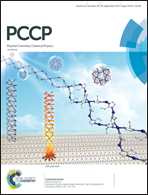Dynamics of ethyl cellulose nanoparticle self-assembly at the interface of a nematic liquid crystal droplet†
Abstract
Design and fabrication of many next-generation liquid crystal (LC)-based devices rely on nematic LC domains in the form of drops or emulsions. In addition to surfactants, solid nanoparticles may be used to stabilize LC-in-water Pickering emulsions, possibly adding new dimensions to device functionality. In this work we quantitatively study the adsorption of ethyl cellulose (EC) nanoparticles, as a colloid model system, on the 4-cyano-4′-pentylbiphenyl (5CB)–water interface via a series of dynamic interfacial tension measurements. It is found that the planar alignment of 5CB molecules at the interface with water is unaffected by particle adsorption, but a significant reduction of the interfacial tension over time occurs. It is also found that adsorption of EC nanoparticles to the LC–water interface is irreversible and results in close hexagonal packing. This study demonstrates a systematic approach to quantitatively investigate the effect of nanoparticles on the stabilization of LC emulsions.



 Please wait while we load your content...
Please wait while we load your content...